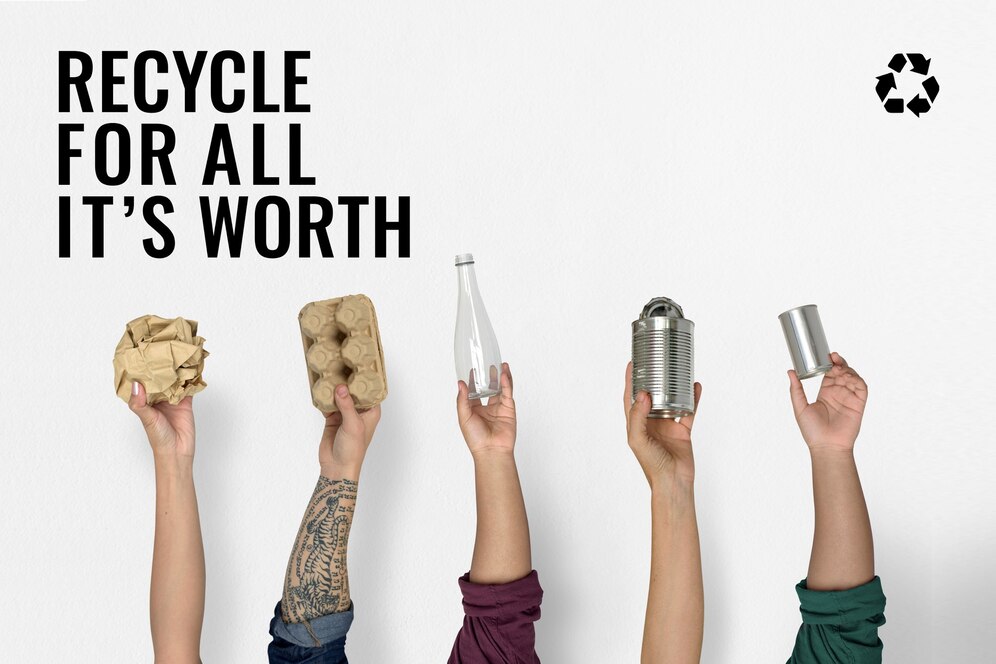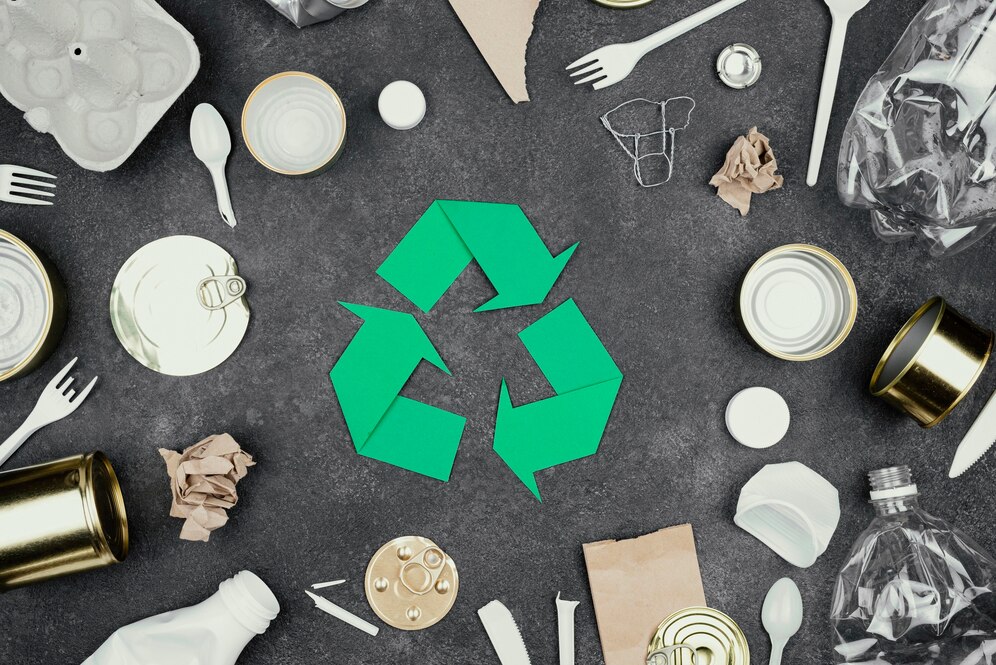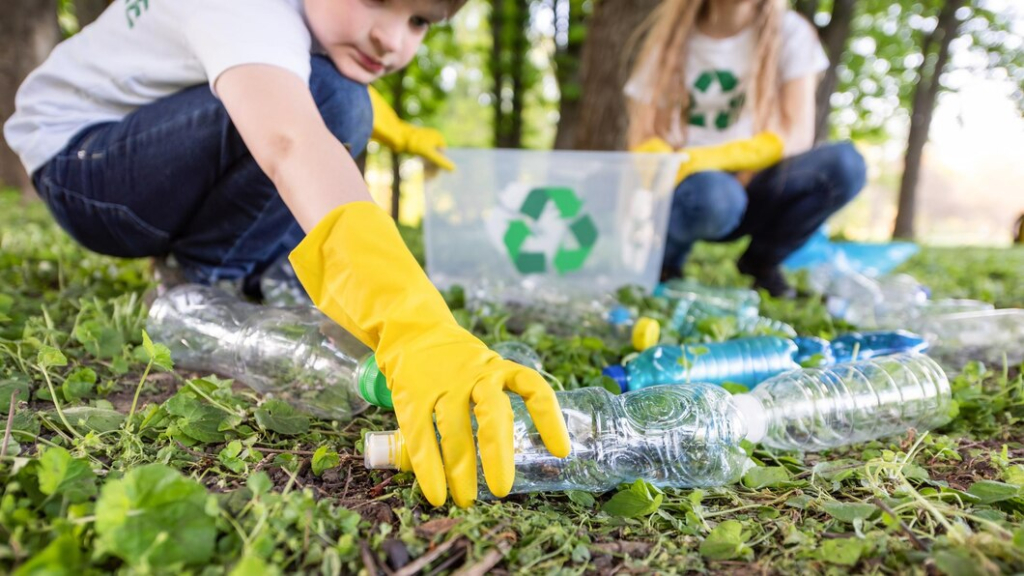
From Trash to Treasure: Creative Recycling Projects
Recycling helps transform everyday discards into valuable resources
With ever-dwindling natural resources and a growing need for energy conservation, reducing waste and promoting a more sustainable future are crucial steps towards a healthier planet. Recycling plays a vital role in this effort, transforming everyday discards into valuable resources and helping us conserve those that remain.
A significant portion of our waste stream comes from traditional materials like paper, plastic water bottles, and glass. However, food waste and discarded food containers are also notable contributors to the waste stream. By embracing creative recycling projects that address these materials, we can significantly impact our environment.
This article explores the power of creative recycling efforts with various projects suitable for all ages and interests, perfect for celebrating Global Recycling Day or simply injecting some eco-conscious fun into your daily routine.
Global Recycling Day: A Celebration of Resourcefulness
Every 18th March, the world celebrates Global Recycling Day, spearheaded by the Global Recycling Foundation. This international awareness campaign encourages individuals and communities to be recycling heroes, embracing a sustainable lifestyle through responsible consumption and waste management.
By participating in creative recycling projects, we can contribute to a cleaner and healthier environment while saving energy through reduced production demands.
Understanding Recycling
Collection and processing
Recycling involves collecting and processing waste materials to create new products. This process reduces the demand for virgin materials, such as timber for paper production or crude oil for plastic, lessening our dependence on these resources.
By giving new life to discarded materials, recycling also helps conserve energy that would otherwise be used to extract and process virgin resources. Additionally, it minimizes landfill waste, reducing harmful methane emissions and creating space for truly non-recyclable materials.
Decoding the Arrows: A Look at Recycling Symbols

Image by freepik on Freepik
A simple icon that holds a wealth of information
Before diving into projects, it’s essential to understand the different recycling symbols. These seemingly simple icons hold a wealth of information, guiding us towards a more sustainable future.
The emblem that represent the core concept of recycling : REDUCE, REUSE, RECYCLE
The most recognizable symbol is the universal recycling symbol, formed by three chasing arrows in a Möbius loop. Designed in 1970, this emblem represents the core concept of recycling: a continuous cycle of reduction, reuse, and recycling. The arrows emphasize the iterative nature of the process, where materials are constantly transformed into new products.
Other universal recycling symbols
Beyond the universal symbol, a variety of others exist. The recycled paper symbol, for instance, indicates the presence of post-consumer recycled content. The crossed-out wheelie bin symbol serves as a reminder that certain electronics and batteries require specialized disposal methods.
The presence of a recycling symbol doesn’t guarantee local acceptance in your curbside bin. Local regulations and infrastructure play a significant role in what materials can be effectively recycled. It’s always wise to consult your local recycling guidelines for the most up-to-date information.
Empowering Kids to Be Environmental Advocates
Children are naturally curious and possess an innate desire to learn and explore the world around them. Getting kids involved in creative recycling activities for Global Recycling Day or any day taps into this natural curiosity while fostering a sense of environmental responsibility at a young age.
These projects serve many purposes: they allow kids to explore their boundless creativity, develop problem-solving skills, and, most importantly, understand the value of reuse and the impact their choices have on our planet.
Creative Recycling Projects for Global Recycling Day
Global Recycling Day provides the perfect opportunity to highlight the importance of recycling in the classroom. By engaging students in fun and engaging projects that showcase the power of creative recycling, you can foster a deeper understanding of responsible waste management, spark their imaginations, and ignite a passion for sustainability.
Here are some exciting ideas to get your home and classroom buzzing with eco-friendly activities:
Crafting a personalized gardening apron from old jeans
Do you have a pair of jeans collecting dust in the back of your closet? Maybe they’re too snug, or the style doesn’t suit you anymore. Before tossing them in the donation pile, consider unleashing your inner creativity and giving them a new lease on life! This project transforms those outgrown jeans into a comfortable, stylish, and, most importantly, functional gardening apron.
Measure & Cut
Decide on your apron length and cut off the jeans legs accordingly.
Fashion the Top
Choose between a simple V-neck (fold down the top of the jeans) or adjustable straps (create straps from fabric scraps and attach them to the waistband).
Pocket Power
Cut fabric scraps for pockets, pin them to the desired location, and sew them securely.
Personalize
Use fabric paint, patches, or embroidery to add a unique touch.
Finishing Touches
Trim the raw edges with pinking shears for a polished look.
Repurposing magazines into bowls
A stack of old magazines can go a long way. It can be rolled and secured with glue to create sturdy and colorful bowls. This project is perfect for practicing paper mache techniques and can be used as a decorative piece or a catch-all for small items.
Gather old magazines, craft glue, paintbrush, scissors, bowl/balloon (mold), optional petroleum jelly, masking tape, spray paint/acrylic paint, and clear sealant.
Prepare: Cut magazines into strips. Choose a round mold (bowl or balloon; coat with petroleum jelly if using a balloon).
Build: Apply glue to a mold section, then smooth a magazine strip on top. Repeat overlapping strips and varying directions for strength. Aim for 3-4 layers. Let dry completely (24-48 hours).
Finishing Touches (Optional): Remove the mold (deflate the balloon or carefully tap out the bowl). Apply a thin glue coat inside and out for extra reinforcement (optional). Decorate with paint and personalize! Seal with clear sealant (optional).
Create a hanging garden
Add a touch of life and color to your patio or balcony by repurposing plastic water bottles into vibrant hanging planters. Cut the bottles in half, add drainage holes, and secure them with rope or twine. Plant herbs, flowers, or small succulents to create a vertical garden.
Make envelopes out of wall calendars
The end of the year always leaves us with a stack of outdated wall calendars. Don’t toss them just yet! With some creativity, you can transform those scenic landscapes or captivating artwork into one-of-a-kind envelopes perfect for sending special greetings. Here’s how:
Pick a Picture: Choose a captivating image from your calendar that suits the occasion.
Cut it Out: Carefully cut out a rectangle around the picture, leaving room for a flap.
Create the Closure: Measure and mark a 1-inch section on the short side for the flap. Apply glue and fold it up to seal the envelope.
Personalize (Optional): Add decorative touches with paper scraps or washi tape.
Paint paper bags
Makeover plain brown paper bags by turning them into colorful tote bags. These reusable shopping bags are a stylish and eco-friendly alternative to plastic bags.
Prep the Bag: Choose a sturdy bag with suitable handles. Flatten and fold the bottom for a sturdier base (optional).
Design Time: Paint, draw, or stencil cool designs on the bag. Use fabric scraps for added texture (optional).
Set the Paint (Optional): Iron the bag using the fabric paint instructions to make the design durable.
Go Green! Write a message like “Reusable Me!” to promote eco-friendly shopping.
Create binoculars using paper towel rolls
Spark children’s imaginations by crafting binoculars from empty paper towel rolls. Decorate them with construction paper, paint, and buttons to enhance the experience.
Assemble: Glue or staple the paper towel rolls together side-by-side.
Decorate: Cut construction paper circles for lenses and glue them on. Paint the binoculars (optional).
Personalize (optional): Add buttons or ribbons for a neck strap.
Upcycle Trash into Flower Art
Who needs expensive vases when you can unleash your creativity and transform everyday trash into stunning floral masterpieces? Instead of sending empty food cans to the recycling bin, consider giving them a second life as the foundation for vibrant flower arrangements.
Clean Up Your Canvas
Gently wash the empty food cans to remove any residual food or labels. Let them dry completely before you begin your artistic transformation.
Prime Time
Apply a primer base coat to ensure smooth paint application and a vibrant final look. This step is especially important if the can has any printed designs.
Paint
Choose colors that complement your décor or the flowers you plan to use. For a classic look, opt for solid colors or metallics. But if you’re feeling adventurous, experiment with bold patterns, polka dots, stripes, or stencils for a personalized touch.
Deck Out Your Design
Don’t stop at paint! Embellish your cans further with decorative elements like glitter, ribbon, fabric scraps, or buttons. Hot glue works wonders for adhering to these embellishments.
Once your masterpiece is complete, it’s time to fill it with life! Fresh flowers in a vibrant array of colors are a natural choice. However, dried flowers, silk flowers, or even decorative grasses can create a unique and long-lasting arrangement.
Beyond Upcycled Decor: Functional Recycled Projects

Recycling doesn’t have to be purely for aesthetics. Here are some ingenious projects that combine creativity with functionality:
Empty cups as no-spill paint cups
Repurpose those small plastic cups used for yogurt or pudding. Poke a small hole in the bottom and secure a piece of string or yarn. Dip the string into the paint, and use the cup as a no-spill paint applicator. This is perfect for young children or for creating unique splatter effects.
Crafty Organizers
Shoeboxes, tin cans, and even old plastic bottles can be transformed into handy organizers for your desk, craft supplies, or even the bathroom. Decorate them with paint, fabric, or washi tape for a pop of color and coordinated style.
Collaborative Projects: Building Together
Recycling projects can be even more rewarding when tackled as a group. Recycling projects can be even more rewarding when tackled as a group. A team’s combined creativity and resources can lead to even more impressive and impactful results.
Create a giant upcycled art wall
Gather your community or classmates and create a collaborative masterpiece. Use recycled materials like cardboard, plastic bottles, and bottle caps to construct a large-scale work of art. This fosters teamwork and inspires a sense of shared responsibility for the environment.
These are just a few ideas to get you started. With a bit of creativity, you can turn everyday discards into something beautiful and functional.
By participating in creative recycling projects, children begin to see everyday discards not as trash but as potential treasures waiting to be transformed. Whether transforming a yogurt container into a vibrant seedling planter or crafting binoculars from empty paper towel rolls, these projects allow children to see the possibilities of reuse.
This newfound awareness lays the foundation for a more responsible relationship with the environment, encouraging them to think twice before throwing something away.
Let this also serve as reminder to support other organizations, efforts, events, and campaigns that raise awareness on conservation of the planet we call home, like the Earth Day. These groups serve as platforms for discussions on relevant topics involving the environment including recyclables, global warming, and climate change.

Celebrate Life’s Milestones in Camella!
Make unforgettable memories in a Camella home.
Our communities are designed to elevate your living experience.


